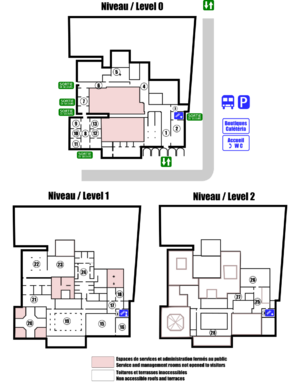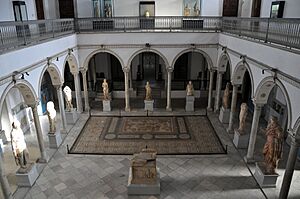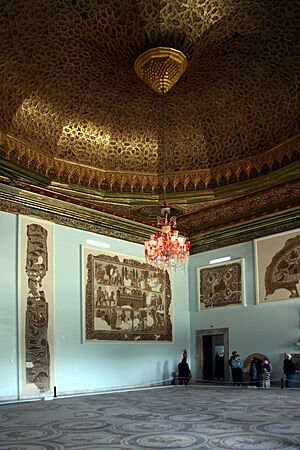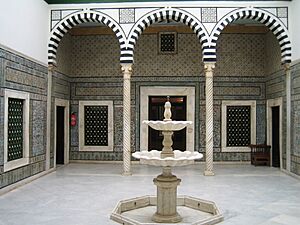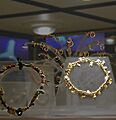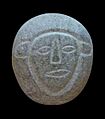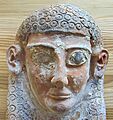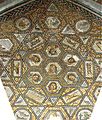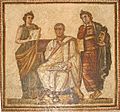Bardo National Museum (Tunis) facts for kids
| Established | 7 May 1888 |
|---|---|
| Location | Le Bardo, Tunis, Tunisia |
| Type | National museum |
| Collection size | over 150,000 Objects Prehistory and Protohistory Libyco-Punic Ancient Egyptian Hellenistic Numidian Roman Early Christianity Vandals Byzantine Islamic Ottoman |
| Visitors | 664,891 (2005) |
The Bardo National Museum is a famous museum in Tunis, Tunisia. It is one of the most important museums in the Mediterranean region. It is also the second largest museum in Africa, after the Egyptian Museum in Cairo. The museum tells the story of Tunisia's past over thousands of years. It shows many different civilizations through its amazing collection of archaeological pieces.
This museum was first suggested in the 1860s. It has been located in an old palace since 1888. It was first called the Alaoui Museum. This name honored the bey (ruler) at that time. After Tunisia became independent, it was renamed the Bardo Museum.
The museum has one of the world's largest collections of Roman mosaics. These mosaics were found during digs at places like Carthage, Hadrumetum, and Dougga. They show what daily life was like in Roman Africa. The museum also has many marble statues of Roman gods and emperors.
You can also see items from Punic sites, like Carthage. These include unique masks, clay statues, and special stone tablets called stelae. One famous stele shows a priest and a child. The museum also displays Greek art. Some pieces were found from a shipwreck near Mahdia. A beautiful marble bust of Aphrodite is a highlight.
On March 18, 2015, the museum experienced a sad event. An attack took place, and some visitors were hurt. Police quickly responded to the situation. The museum is now safe and continues to welcome visitors from all over the world.
Contents
Discover the Bardo Museum
The Bardo National Museum is housed in a beautiful 15th-century palace. This palace is located in the suburbs of Tunis. It is a truly special place to explore history.
The museum is a treasure chest of artifacts from many civilizations. It shows the rich history of Tunisia over thousands of years. You can see major works found since archaeological research began in the country.
Inside, you'll find incredible collections. The Islamic Department has a famous Blue Koran from Kairouan. It also features many ceramics from North Africa and Asia Minor.
Amazing Roman Mosaics
The Bardo Museum is famous for its huge collection of Roman mosaics. These mosaics are some of the best and largest in the world. They were found in places like Carthage, Hadrumetum, and Utica. These artworks are like windows into everyday life in Roman Africa. The museum also has many marble statues. These statues show Roman gods and emperors. They were found at sites like Carthage and Thuburbo Majus.
Ancient Punic and Greek Treasures
The museum also holds fascinating items from Punic sites. These include grimacing masks and clay statues. There are also stelae, which are carved stone slabs. One very famous stele shows a priest and a child. The Bardo also has Greek artworks. Many of these were found from the Mahdia shipwreck. A marble bust of Aphrodite is a well-known piece.
The museum had a big renovation that finished in 2012. This made the museum even larger and better for visitors.
Museum Collections
The Bardo Museum has a huge collection of Roman mosaics. It also displays other ancient items. These come from Ancient Greece, Carthage, Tunisia, and the Islamic period.
You can see objects from pre-historic times to modern jewelry. The museum offers a journey through different eras.
Technologies for Visitors
Since June 17, 2014, the museum has offered a digital guide. This guide is available in English, French, and Arabic. It was created by Orange Tunisia.
Visitors can download a free app to their smartphones. They can also borrow a free smartphone at the museum entrance. The app provides audio guides and photo slideshows. It also shares historical and geographical facts about the artworks.
Images for kids
Gallery
Carthaginian art
Famous mosaics
-
Neptune Roman mosaic Bardo Museum Tunis.jpg
Neptune Roman Mosaic
-
Roman mosaic of "Crescentinus diaconus", dating from the CE 4th century. The inscription translates: "The host of the angels, the count of the martyrs, and breathing a peaceful life, may he go to you in a holy manner. Our memory, with the gracious piety with which the deacon Crescentinus is accustomed, returned in peace the 3rd Augustus Kalends."
Famous sculptures
Pieces in the ground floor
Fresco and Roof of Althiburos Room
Roofs of Oudna Room
Roofs of Sousse Room
Roofs of Virgil Room
See also
 In Spanish: Museo Nacional del Bardo para niños
In Spanish: Museo Nacional del Bardo para niños
- Culture of Tunisia
- List of museums in Tunisia
- History of Tunisia
- Ancient Carthage
- Carthage National Museum


